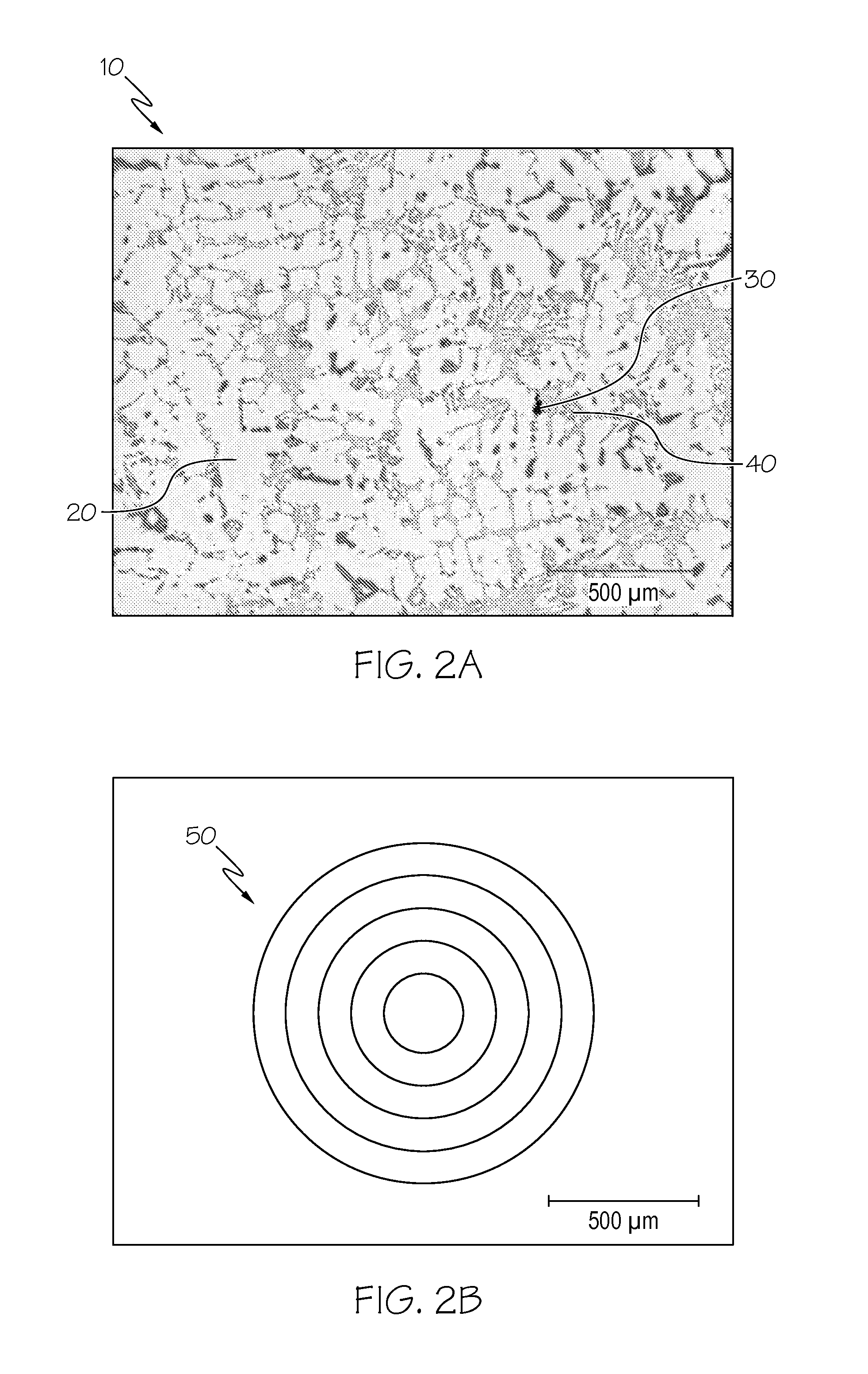Method for automatic quantification of dendrite arm spacing in dendritic microstructures
a dendrite arm spacing and automatic quantification technology, applied in image data processing, instruments, image enhancement, etc., can solve the problems of high labor intensity and high dependence on skills
- Summary
- Abstract
- Description
- Claims
- Application Information
AI Technical Summary
Benefits of technology
Problems solved by technology
Method used
Image
Examples
Embodiment Construction
[0025]Referring first to FIGS. 1 and 7, as mentioned above, one of two approaches is used to convert a measured or sampled DCS value to DAS. As discussed above, an automated way to predict DAS distribution within a cast component may include taking a micro sample from the casting location of interest and analyzing it through a computer-based image analyzer. Referring with particularity to FIG. 7, an image analyzer system (also referred to herein as image analysis system, image analyzer or the like) 300 includes a computer 310 or related data processing equipment that includes a processing unit 310A (which may be in the form of one or more microprocessors), one or more mechanisms for information input 310B (including a keyboard, mouse or other device, such as a voice-recognition receiver (not shown)), as well as a one or more loaders 310C (which may be in the form of magnetic or optical memory or related storage in the form of CDs, DVDs, USB port or the like), one or more display scr...
PUM
| Property | Measurement | Unit |
|---|---|---|
| cell size | aaaaa | aaaaa |
| volume fraction | aaaaa | aaaaa |
| aspect ratio | aaaaa | aaaaa |
Abstract
Description
Claims
Application Information
 Login to View More
Login to View More - R&D
- Intellectual Property
- Life Sciences
- Materials
- Tech Scout
- Unparalleled Data Quality
- Higher Quality Content
- 60% Fewer Hallucinations
Browse by: Latest US Patents, China's latest patents, Technical Efficacy Thesaurus, Application Domain, Technology Topic, Popular Technical Reports.
© 2025 PatSnap. All rights reserved.Legal|Privacy policy|Modern Slavery Act Transparency Statement|Sitemap|About US| Contact US: help@patsnap.com



